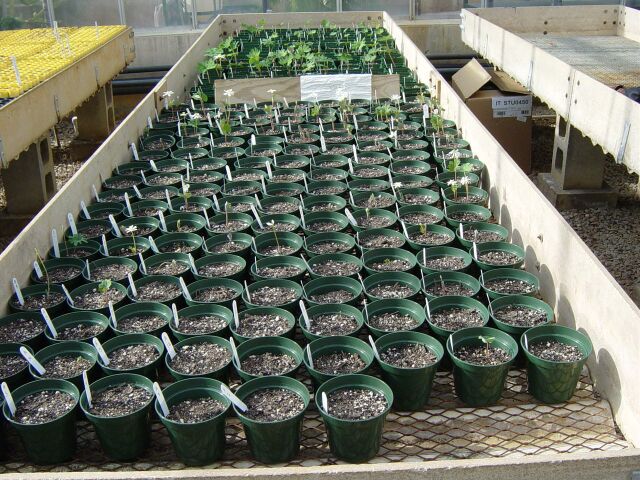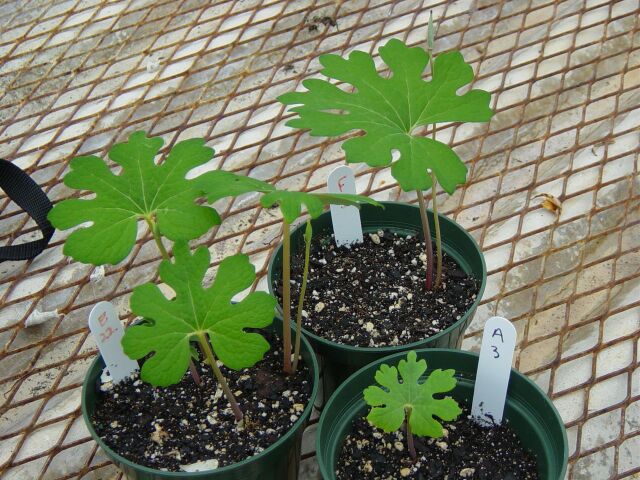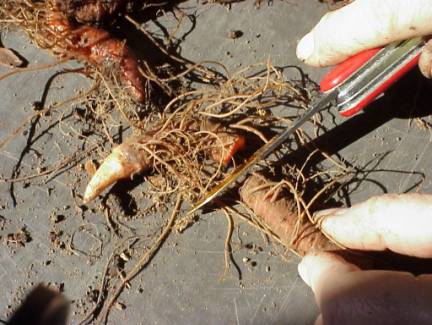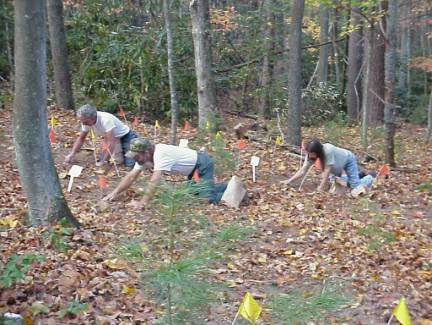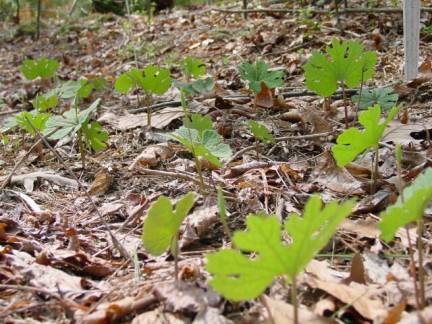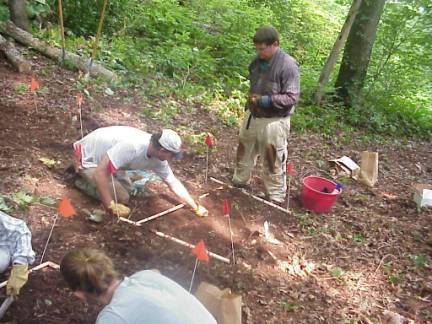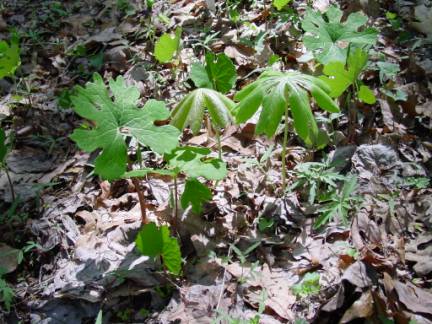Development of Medicinal Crop Analysis, Propagation, and Production Methods-2002 Report
go.ncsu.edu/readext?454100
en Español / em Português
El inglés es el idioma de control de esta página. En la medida en que haya algún conflicto entre la traducción al inglés y la traducción, el inglés prevalece.
Al hacer clic en el enlace de traducción se activa un servicio de traducción gratuito para convertir la página al español. Al igual que con cualquier traducción por Internet, la conversión no es sensible al contexto y puede que no traduzca el texto en su significado original. NC State Extension no garantiza la exactitud del texto traducido. Por favor, tenga en cuenta que algunas aplicaciones y/o servicios pueden no funcionar como se espera cuando se traducen.
Português
Inglês é o idioma de controle desta página. Na medida que haja algum conflito entre o texto original em Inglês e a tradução, o Inglês prevalece.
Ao clicar no link de tradução, um serviço gratuito de tradução será ativado para converter a página para o Português. Como em qualquer tradução pela internet, a conversão não é sensivel ao contexto e pode não ocorrer a tradução para o significado orginal. O serviço de Extensão da Carolina do Norte (NC State Extension) não garante a exatidão do texto traduzido. Por favor, observe que algumas funções ou serviços podem não funcionar como esperado após a tradução.
English
English is the controlling language of this page. To the extent there is any conflict between the English text and the translation, English controls.
Clicking on the translation link activates a free translation service to convert the page to Spanish. As with any Internet translation, the conversion is not context-sensitive and may not translate the text to its original meaning. NC State Extension does not guarantee the accuracy of the translated text. Please note that some applications and/or services may not function as expected when translated.
Collapse ▲This is a 2002 report from a NC Specialty Crops Program Project. It is posted for historical reference purposes.
Reviewed by Jeanine Davis, NC Alternative Crops & Organics Program, Department of Horticultural Science, NC State University on 9/27/2022.
PROJECT LEADER(S): David A. Danehower, NC State University Crop Science
Jeanine Davis,NC State University Horticultural Sciences
Robin Suggs, Yellow Creek Botanical Institute
Maria Onofrietti, MS student,NC State University Horticultural Sciences
TYPE OF PROJECT: Research
LOCATION: Mountain Horticultural Crops Research Station, Fletcher, NC
Mountain Crops Research station, Waynesville, NC
Yellow Creek Botanical Institute, Robbinsville, NC
NC State University Crop Science Department, Raleigh, NC
NC State University Horticultural Science Department, Raleigh, NC
IMPACT
The agronomic production of medicinal and pharmaceutical crops in North Carolina holds great promise for rural economic development. This project focuses on the development of propagation and production systems for Bloodroot (Sanguinaria canadensis). There is growing demand for Bloodroot rhizome material for an animal feed additive that is used as an alternative to antibiotics. By establishing effective production systems for this plant, we aim to provide growers in western North Carolina with an opportunity to enter this niche agricultural market. Production research also serves to promote the conservation of native populations of bloodroot by mitigating the ecological degradation associated with extensive wild-harvesting. The development and implementation of a technique for phytochemical analysis of Goldenseal (Hydrastis canadensis) was also achieved through this study.
INTRODUCTION
The agronomic production of medicinal and pharmaceutical crops in North Carolina holds great promise for rural economic development. This project focuses on the development of propagation and production systems for Bloodroot (Sanguinaria canadensis). NC accessions of Bloodroot produce high quantities of the active principle, sanguinarine, and related metabolites. There is considerable potential to supply bloodroot for the manufacture of a European animal feed supplement. This supplement is used as a replacement for antibiotics and has demonstrated efficacy. Current demand for production of this product is around 25 metric tons annually, with future demand estimated at 100-150 metric tons. Presently there is little known regarding the cultivation of bloodroot on a large scale.
Support was also provided for completion of related projects in the general area of medicinal plants. This included development of analytical methods and analysis of another native medicinal, Goldenseal (Hydrastis canadensis).
METHODS & RESULTS
Methods and findings for six studies are described separately in this section.
1. Bloodroot Propagation Factors Study
METHODS
The objectives of this experiment were to determine (1) the chilling requirement to break dormancy, and (2) the minimum size of propagule a rhizome section can be divided into and still get growth. 400 rhizomes were divided into four groups containing 100 rhizomes each and stored in moist peat at 40 degrees C. A group was taken out of cold storage at 1, 2, 3, and 4 months, divided into propagule type, weighed, and planted. Propagule types included (1) lateral bud only (0.1-1.0g), (2) lateral bud (1.1 – 2.0g), (3) lateral bud (2.1 – 5.0g), (4) no apparent bud, (5) terminal bud only, and (6) whole rhizome (multiple bud) section. Emergence dates and total emergence data were collected in order to test for any correlation between stratification time, propagule type, and emergence.
RESULTS
Poor emergence was observed for all propagule types treated for one month at 40 C. Emergence was intermediate for all propagules chilled for two months. The number of plants emerging was greater than the first treatment and the average time for emergence was much shorter than those treated for one month. Propagules with larger buds emerged more quickly than those without buds or with very small buds. Propagules treated for 3 months at 40 C emerged very well regardless of size. Many plants flowered, but there was almost no seed production. When rhizomes were removed from the cooler for planting after 4 months of cold treatment, all rhizomes with at least one bud had already begun to emerge. The experiment was therefore terminated at this point.
CONCLUSIONS
A three-month stratification period results in excellent emergence regardless of propagule size. A two-month period gave good emergence, while a one-month period resulted in poor emergence. Smaller propagules (small buds of < 2 gfw) emerge well and grow normally during the early stages of development. This suggests that smaller propagules, including buds detached from rhizome sections, may serve as a good source of material for propagation of bloodroot. This may significantly decrease the amount of plant material required to produce materials for transplanting. Further study of methods for increasing bloodroot bud numbers and the use of buds as propagules is warranted.
2. Development of Bloodroot Rhizome Production Systems – Rhizome Size
Experiments were begun to examine methods for producing bloodroot from rhizome cuttings. Bloodroot rhizomes were cut into sections of varying size to produce three treatments: (1) two-inch sections with a bud, (2) two inch sections without a bud, and (3) whole rhizome section with multiple buds. These were planted in raised beds under shade cloth and in wooded plots. Emergence data was recorded for 2002 and will be recorded for 2003. Rhizomes will be harvested in the Fall of 2003. Size and weight will be recorded. Chemical analysis for alkaloid content will be performed.
3. Development of Bloodroot Rhizome Production Systems – “Polyculture” Studies
Trials were established to study bloodroot growth and alkaloid production in a “polycultural” system where bloodroot is planted together with another woodland medicinal. Goldenseal, mayapple and black cohosh were chosen for inter-planting with bloodroot in a randomized split plot design with four replications. The main treatment is years of harvest (1, 2, and 3 years of growth), with split treatments consisting of: (1) Bloodroot alone, (2) Bloodroot and goldenseal, (3) Bloodroot and black cohosh, (4) Bloodroot and mayapple. Data will be collected beginning in the spring and summer of 2003. The rhizomes will be weighed and analyzed for chemical content at harvest beginning in the fall of 2003.
4. Identification and Collection of Bloodroot Accessions
Seventeen geographically distinct locations within the Nantahala and Pisgah National Forests with significant populations of bloodroot were identified and mapped using GPS. Additional sites will be identified in spring 2003 in order to obtain total of approximately 40 distinct sites for further research. Twelve plants (rhizome sections), constituting a single “accession,” will be collected from those sites in summer 2003. Four rhizome sections per accession will be analyzed for their alkaloid content, the remaining eight rhizome sections will be divided and planted into germplasm reserves at research stations at Fletcher and Waynesville, NC.
5. Development of Bloodroot Rhizome Production Systems – Lighting Requirements
Observations at the Yellow Creek Botanical Institute field site in Graham County in Fall 2002 suggest that bud numbers and size increase for rhizomes grown in beds at a woodland edge (higher light environment) when compared to rhizomes grown in more fully shaded woodland settings (lower light environment). This observation is supported by work conducted by Marino et al (1997) in which bloodroot rhizomes grown in higher light environments were reported to have increased leaf numbers and size, indicative of greater branching.
Conclusions: This work indicates that higher light environments may result in increased branching of transplanted rhizome sections and could lead to an increased rate of growth. Additional studies to determine the optimum lighting environment for bloodroot are warranted.
6. Analysis of Goldenseal Samples
A robust soxhlet extraction and reversed-phase analytical method was developed and implemented for the analysis of goldenseal. Over 600 samples and standards were analyzed for hydrastine and berberine content from a series of experiments studying the influence of shading, mulch, spacing, and gypsum treatments on goldenseal alkaloid content and plant productivity. Analysis of this data is nearing completion.
CONCLUSION
This project is focused upon development of systems for small-scale agronomic production of bloodroot and other medicinal plants. Bloodroot is used as an animal feed additive in Europe. Its benefits include reduction in the use of antibiotics in feed as well as increased weight gain in the animals. Currently, no production system exists for this plant. Wild-crafted plant materials constitute the sole source of bloodroot for this market, a practice that is probably unsustainable over the mid- to long term.
Development of propagation and production systems for bloodroot holds promise as an agricultural “niche” market for growers in Western North Carolina. Such a market would provide supplemental income for rural residents of the North Carolina mountains, while protecting natural populations of bloodroot from loss due to over-harvesting.
PHOTOS



